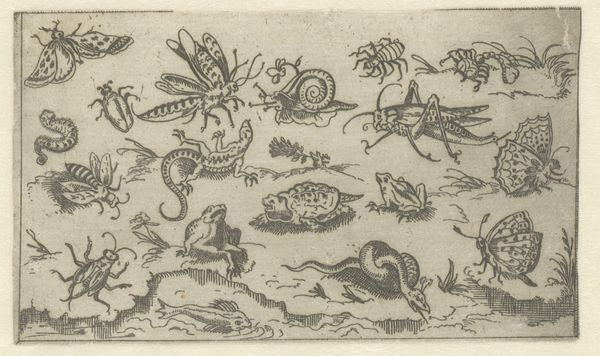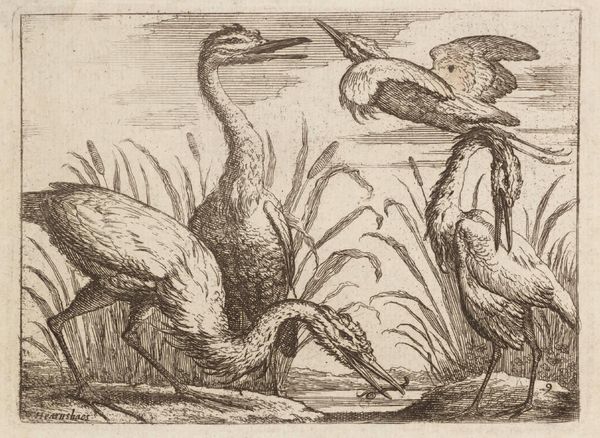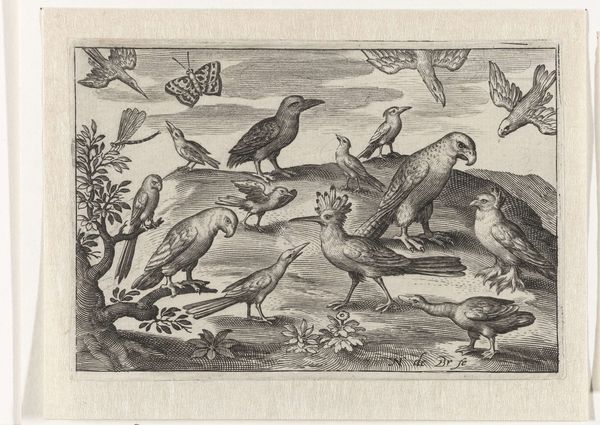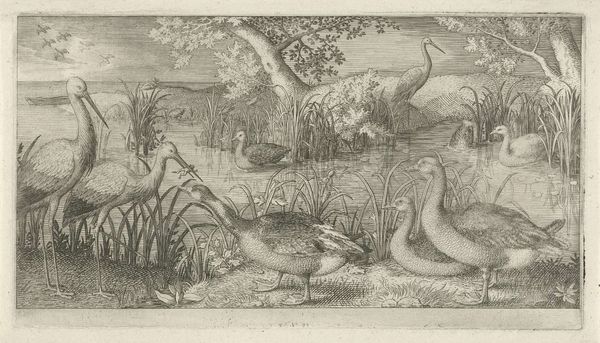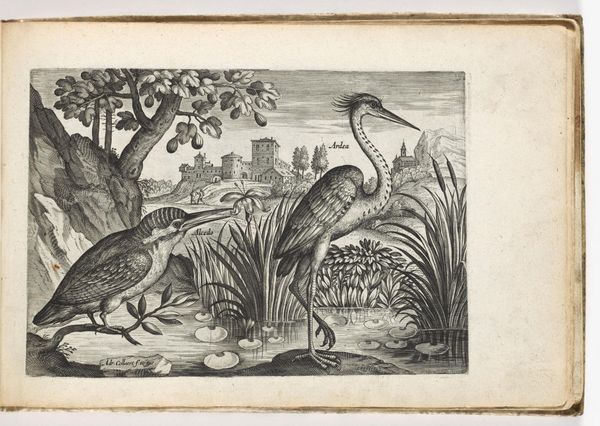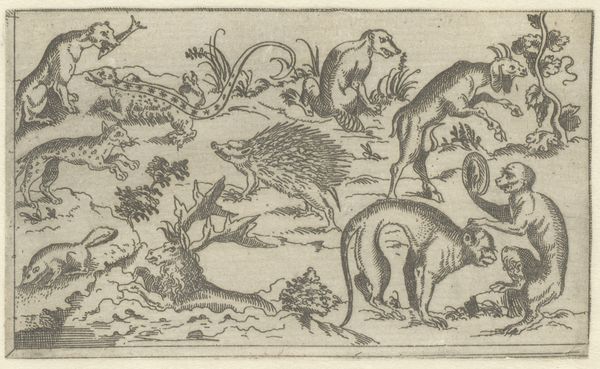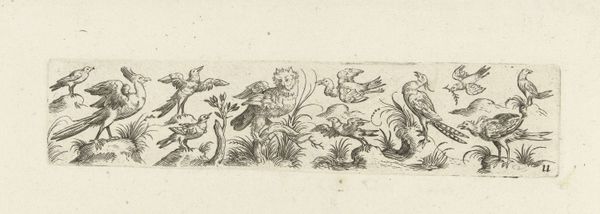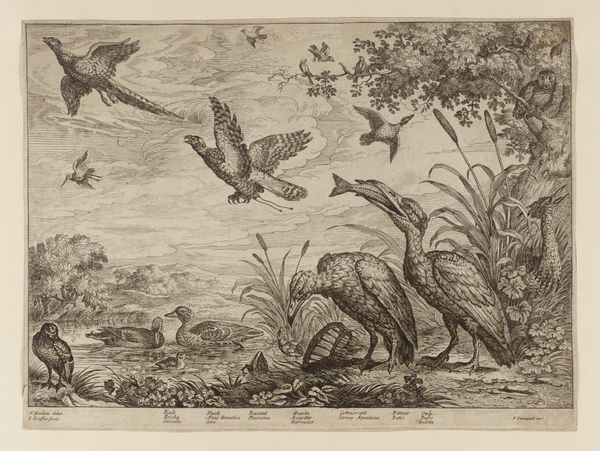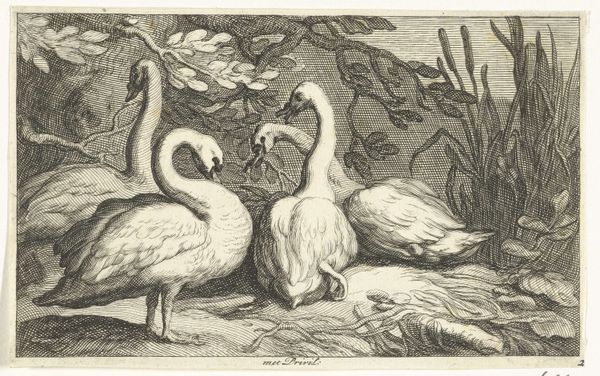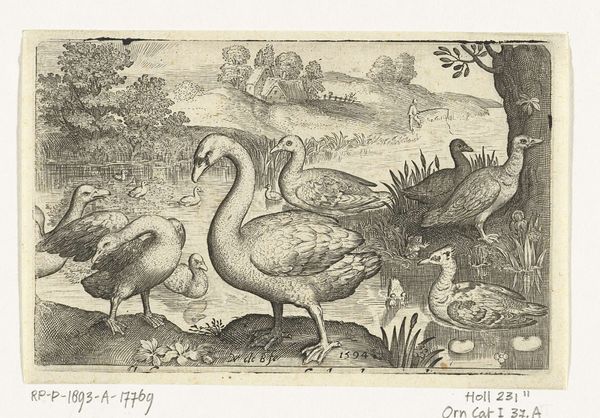
drawing, ink, pen
#
drawing
#
ink drawing
#
baroque
#
pen drawing
#
animal
#
dutch-golden-age
#
pen sketch
#
landscape
#
bird
#
figuration
#
ink
#
plant
#
pen
Dimensions: height 42 mm, width 154 mm
Copyright: Rijks Museum: Open Domain
Curator: This is "Fries met tien vogels bij water," an ink and pen drawing created between 1581 and 1656, and currently residing in the Rijksmuseum collection. The artist we attribute this work to is Nicolaes de Bruyn. Editor: It strikes me as a bustling scene, all in monochrome of course, like an intricate wallpaper border. The texture is so varied, created entirely with the pen and ink. It's as if a fleeting moment in nature has been carefully captured, frozen in time through De Bruyn's artistry. Curator: These border designs were quite popular. Waterbirds, such as the cranes depicted, often carried associations with vigilance and watchfulness, particularly in Dutch art of this period. Perhaps these birds served as a reminder to remain ever observant, and wary of one's surroundings. Editor: The contrast between the tightly rendered birds and the sparser rendering of the background reeds interests me. See how the lines vary so delicately and achieve such a subtle shift in spatial planes through only black and white. The pen work describes the plumage, too. Each feather distinct, yet the forms read fluidly. Curator: Certainly. Birds are perennial symbols of the soul's yearning for freedom, too, the ability to move between earth and sky. Water, equally, functions symbolically as an allegory to life's fluidity, transition, and also introspection. Combined, they deliver the idea that wisdom derives from a constant quest, not simply from adherence to one state or domain. Editor: But is this pursuit portrayed peacefully? Several birds seem preoccupied with worms, for example, embodying the constant struggle of nature. Does that undercut the spiritual longing? Curator: I think it introduces realism and tension, and complexity, adding a moral layer perhaps of how much striving you are allowed. Art in the Dutch Golden Age certainly enjoys introducing paradox into our view. Editor: An enriching insight, as always! Nicolaes de Bruyn provides not merely an aesthetically beautiful border, but invites us to delve into historical reflection. Curator: Yes, and for me, as always with art, the combination of aesthetics and ideas is key!
Comments
No comments
Be the first to comment and join the conversation on the ultimate creative platform.
